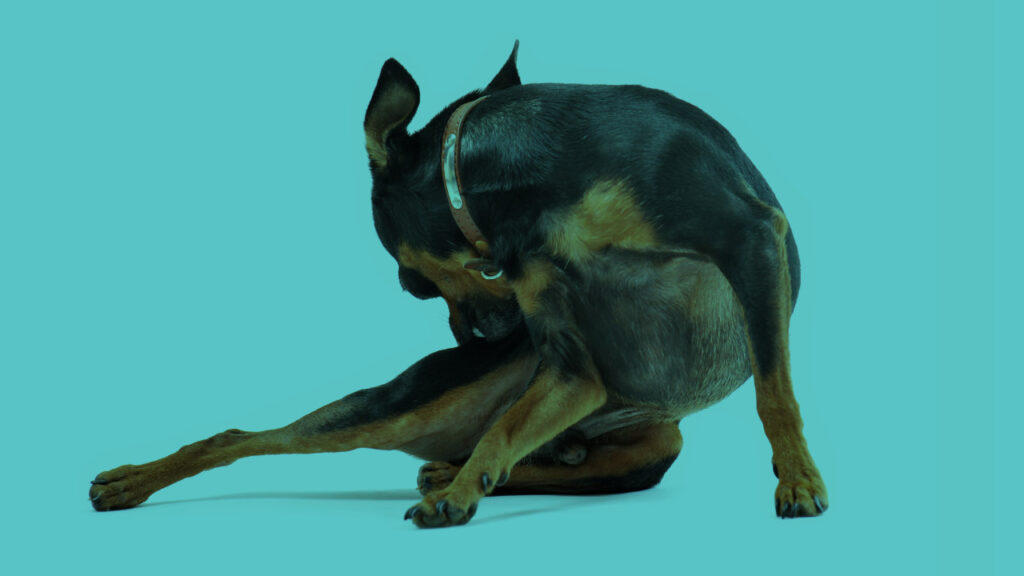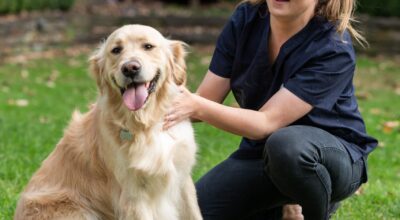How to treat and manage an itchy dog

Following on from our last post that listed the reasons why dogs get itchy, our vets now have some tips for helping you manage your itchy patient at home.
How can I help my itchy dog?
It’s a good idea to read our last post to help you identify the reason why your dog is itchy, because treatment depends on the cause.
1. Fleas:
It’s important to use an effective dog specific flea product regularly. It’s the only thing that kills them as quickly as possible, so there’s less time for them to cause an itch (remember, a single flea can cause big havoc). You’ll also need to vacuum and wash your pup’s bedding, as well as any blankets or toys that make up their space.
2. Inhaled allergies (atopy):
These allergies are usually treated with corticosteroids or other immune suppressive drugs, so you’ll need to see a vet. Antihistamines are sometimes effective too. In terms of what you can do, oatmeal shampoos and fatty acids in your pup’s diet are really important.
3. Food allergies:
It’s best to identify the problem protein with a food allergy elimination trial (again, see chat with a vet). From there, avoid those foods altogether. It’s truly the best method of management. You might still be able to feed your pup commercial food, but it really depends on the allergy. In some cases you’ll have to switch to a home cooked diet.
4. Contact allergies:
If your pup comes into contact with a plant that makes them itchy, bathe them to remove it from their coat. As with food allergies, avoidance is best at all costs. Change where you exercise your fur kid or keep them on a leash to lessen their chances of contact. At home, remove weeds or plants from your garden, or make a barrier so your pup can’t get to them.
Trad (or Tradescantia albiflora) is a ground cover and major cause of contact allergy––it’s very difficult to remove as it keeps growing back, so you’ll need to be vigilant.
5. Mites–Demodex:
This is easily diagnosed by a Vet with a microscopic examination of skin scrapings. The condition is mostly treated with oral medication to kill the mite, which can be very involved and long term (months). As the mite is in the follicle, medicated washes and treatment of secondary infection are also important, which you can do at home.
6. Mites – Scabies:
Scabies can be easily treated with a number of products, including topical spots and rinses. In some cases, it can be difficult to find mites under the microscope, so your Vet may advise a trial treatment regardless. Within a few weeks, you’ll know for sure whether scabies is the cause.
How can I relieve itching at home?
Regardless of what’s causing the itch, there are many ways you can bring your dog some much needed, very welcome relief.
1. Regular flea control is key
To reduce the amount of allergens for an itchy fur kid, they need to be on a trusted flea treatment. This is because allergies can have an additive effect. Your dog becomes itchy once a ‘threshold’ is met.
2. Oatmeal shampoos for relief
Regular bathing with colloidal oatmeal shampoos and conditioners are very effective for itchy canines. Please make sure they’re the ones specifically for dogs and not humans. We have a different skin pH, so human products just aren’t appropriate.
3. Omega fatty acids in foods
These are a natural anti-inflammatory for the skin and will help relieve your itchy companion.
When should I go the vet?
If your dog has scabs or sores on their skin, you need to go to consult a vet as soon as possible, we are here 24/7 if you need us! If you need to take your vet to the clinic, they’ll perform tests to check for parasites, infection, atopy, internal medical conditions, immune mediated disease and more.



